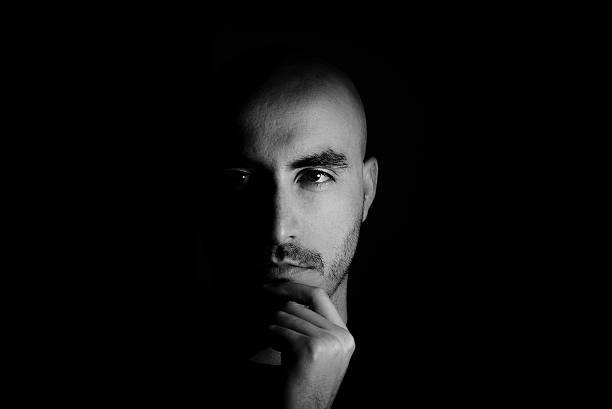You’re staring out the window. Maybe you’re in class, maybe in a meeting, maybe on a bus. The real world hums around you—words are being said, tasks are being assigned, decisions are being made—but you’re somewhere else entirely. You haven’t moved. You haven’t spoken. But you’ve vanished.
In your mind, you’re already halfway through a conversation that hasn’t happened yet. Or reliving something that ended long ago. You might be imagining what you’ll say when you finally tell the truth. You might be dancing in front of a crowd that adores you, or holding the hand of someone you haven’t met yet, or rewriting a memory that never sat quite right.
You are daydreaming.
And while the world might dismiss this moment as laziness or distraction, something extraordinary is happening in your brain.
Far from being a waste of time, daydreaming is one of the most powerful—and least understood—mental activities we engage in. It is a rehearsal for life, a sanctuary for emotion, a playground for possibility, and a mirror for the soul. It is the voice of your mind when no one is watching. It is imagination made private—and potential made real.
To understand what your mind does when you daydream is to understand what it means to be human.
The Neuroscience of Elsewhere
For centuries, scientists ignored daydreaming. It was considered mental noise—static to be filtered out so we could focus on more “productive” things. But in the early 2000s, a revolutionary discovery flipped that idea on its head.
Using fMRI technology, researchers began noticing that the brain wasn’t idle when it wasn’t focused on a task. In fact, it lit up. Not randomly—but in a specific, consistent way. A network of brain regions became active, as if the brain had its own internal power grid for “off moments.”
They called this the default mode network—and it turns on when your attention turns inward. When you’re resting. Reflecting. Remembering. Imagining. Daydreaming.
This default mode network connects areas of the brain involved in memory (like the hippocampus), emotion (like the limbic system), social understanding (like the medial prefrontal cortex), and future planning (like the parietal lobes). When you daydream, your brain doesn’t shut down. It shifts focus—from the external world to the internal one.
In fact, some studies show that the brain may be even more active during daydreaming than during conscious concentration. You’re not doing nothing. You’re running simulations. You’re constructing alternate realities. You’re time traveling through emotion.
You’re solving problems you didn’t know you had.
The Past, the Future, and the Fantasies In Between
Most people think daydreaming is just about fantasy. But neuroscience tells a different story.
When you drift off into your own head, your brain often activates autobiographical memory circuits. You’re not just imagining the future—you’re pulling from the past. Memories resurface. You replay events. You try out new endings. You analyze what went wrong, what could have gone differently.
This mental time travel is called episodic simulation, and it’s part of how we prepare for life. Your mind takes pieces of memory and rearranges them into possible futures. That conversation you’ve been rehearsing in the shower for two weeks? That speech you keep giving to your boss in your head? That imaginary scenario where you finally say the perfect thing?
Those aren’t distractions. They’re mental blueprints.
Daydreaming is how we rehearse for reality. It’s our brain’s way of preparing us for challenges, expressing longings, processing regrets, or trying out courage in a world that feels safer than the one we live in.
And yes, sometimes it’s pure fantasy. Sometimes you imagine being a rock star or an astronaut or telling your high school bully exactly what you think of them now. But even these dreams carry information. They show you what matters. What hurts. What you secretly wish for.
They are truth wrapped in fiction.
The Emotional Engine of Imagination
Behind every daydream is a feeling.
You don’t imagine because you’re bored. You imagine because you’re full. Full of what-ifs. Full of emotion. Full of unmet needs and unresolved stories. Daydreaming is how your mind metabolizes those feelings when life doesn’t give you space to express them.
You might daydream more when you’re lonely—not because you’re lazy, but because your brain is trying to reconnect you to warmth, even if only in your imagination. You might daydream when you’re overwhelmed—because creating a new story helps you escape the one you’re drowning in. You might daydream when you’re stuck—because it’s the only place you still feel free.
In this way, daydreams are not a failure of attention. They are a signal of something deeper.
The psychologist Jerome Singer, who spent much of his career studying daydreaming, divided it into three types: positive constructive (creative, future-oriented), guilty-dysphoric (ruminative, regretful), and poor attentional control (mind-wandering due to distraction).
Each one tells a story.
The artist who loses themselves in visions of a world that doesn’t exist yet—they’re practicing positive constructive daydreaming. The heartbroken lover who keeps replaying their final fight? That’s guilty-dysphoric. The overworked parent who can’t finish a sentence without their mind drifting away? That may be attentional fatigue.
But all are valid. All are natural.
All are expressions of a mind reaching toward something it needs.
Daydreaming and Creativity: The Silent Architect
Many of the world’s most brilliant thinkers were prolific daydreamers. Einstein famously said his best ideas came not from the lab, but from “thought experiments” he conducted while walking or staring into space. Nikola Tesla once claimed he could construct entire machines in his head and see them operating before he ever built them.
Virginia Woolf, J.K. Rowling, Steve Jobs, Maya Angelou—so many creatives credit their greatest insights not to discipline alone, but to the mysterious, drifting mental states where inspiration struck like lightning.
Creativity requires freedom. And daydreaming is freedom.
It is the brain’s rehearsal studio, where imagination gets to be weird, nonlinear, unedited. It is the rough draft before the canvas, the sketch before the novel, the whisper before the symphony.
When we stop daydreaming, creativity begins to atrophy. We become efficient but uninspired. Productive but passionless.
The irony is that many school systems and workplaces punish daydreaming. “Focus!” they say. “Pay attention!” But perhaps we should reframe that.
Because what if, in those moments of mental wandering, your brain is actually paying deeper attention—to your inner world, to your desires, to patterns you haven’t named yet?
What if daydreaming isn’t the opposite of focus?
What if it’s a different kind?
The Link Between Daydreaming and Empathy
One of the most beautiful—and underappreciated—functions of daydreaming is its role in empathy.
When your mind drifts, you often find yourself imagining other people’s thoughts. Their emotions. Their reactions to things that haven’t even happened. This isn’t indulgence. It’s rehearsal for connection.
Psychologists call this theory of mind—the ability to attribute mental states to others. It’s what allows you to read between the lines in conversation. To sense tension. To imagine how your words will land. To care.
Studies show that people who daydream more often—and more vividly—tend to score higher in empathy. They’re better at reading social cues, understanding emotions, and navigating complex relationships.
Why?
Because daydreaming is practice. For being human. For being kind. For imagining someone else’s pain. For walking in someone else’s shoes—even if only in your mind.
In a world increasingly fractured by technology and disconnection, maybe the act of imagining other people’s experiences is not a luxury. Maybe it’s a necessity.
When Daydreaming Hurts
But like anything powerful, daydreaming has a shadow.
For some, it becomes an escape hatch they can’t close. A way of avoiding the present, the painful, the real. Psychologists call this maladaptive daydreaming—a condition where people spend so much time in imagined worlds that their real life suffers. Jobs, relationships, health all decline while the mind floats elsewhere.
This is not just common distraction. It’s an addiction to imagination.
And it’s not weakness. It’s often trauma.
When reality becomes too hard, the mind builds a softer place. Sometimes this is necessary. Especially in childhood, when escape into fantasy can be a survival mechanism. But without healing, the habit can persist. The line between dream and life blurs. The dream begins to win.
In these cases, daydreaming isn’t the enemy. It’s the messenger.
It’s asking: what hurts so much that I’d rather be anywhere else?
The answer isn’t to stop dreaming.
It’s to build a life you don’t need to escape from.
Children, Imagination, and the Play of Possibility
Watch a child for five minutes and you’ll see the purest form of daydreaming. They pretend to be pirates, wizards, superheroes, astronauts. They talk to imaginary friends. They rewrite reality with boundless ease.
This isn’t just play. It’s development.
Children daydream to understand the world. To test limits. To express fears. To imagine power in a world where they have so little. Their fantasies aren’t lies—they are emotional truths, shaped in metaphor.
But something tragic happens as we grow up.
We tell children to “focus.” We replace imagination with standardization. Creativity with compliance. Slowly, the dream is replaced with the task. The inner world goes silent.
And we wonder why adulthood feels so empty.
But the daydream never dies. It just waits—quietly, behind your eyes—for permission to return.
Your Inner Theater: What Your Daydreams Say About You
Every person has a signature mental landscape—a style of daydreaming. For some, it’s visual. For others, it’s verbal. For some, it’s musical or kinetic or deeply emotional.
Your daydreams reflect your core self—your values, your wounds, your hopes, your unresolved questions.
If you listen, they will teach you.
That recurring fantasy about being seen and applauded? Maybe you’re craving recognition. That imagined rescue from danger? Maybe you need to feel safe. That daydream where you finally say what you really think? Maybe your truth is suffocating in silence.
Your daydreams don’t lie. They just speak a different language.
You don’t have to analyze every thought. But honoring your inner world with curiosity can be revolutionary.
Because maybe the most important dreams aren’t the ones you chase at night—
But the ones that chase you when you’re awake.
Dreaming Forward: Making Daydreams Real
So what do we do with all of this?
We learn to trust the drift.
When your mind wanders, don’t always pull it back. Follow it. See where it goes. See what it’s trying to show you. You might find a solution to a problem you didn’t know you were solving. You might uncover grief you didn’t know you were carrying. You might meet a version of yourself who’s been waiting for you to listen.
The world needs more dreamers—not in the naïve sense, but in the radical one.
Because those who dare to imagine a different world are the ones who build it.
And every revolution, every invention, every work of art, every act of bravery—
Began as someone’s daydream.






